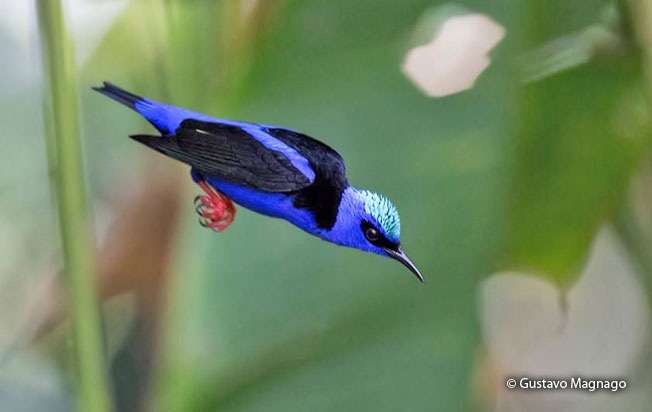Order: Passeriformes | Family: Thraupidae | IUCN Status: Least Concern

Age: Adult | Sex: Male | Loc. Amazonia, Brazil

Age: Adult | Sex: Female | Loc. Amazonia, Brazil

Age: Adult | Sex: Male | Loc. Amazonia, Brazil

Age: Adult | Sex: Female | Loc. Amazonia, Brazil
Status: The Red-legged Honeycreeper is uncommon to rare but widespread in Amazonia where it is known to range up to 600 m along the foothill of the Andes. It also occurs in Co, Ec, Br, and Bo.
Name in Spanish: Mielero de Pata Roja.
Sub-species: Red-legged Honeycreeper (Cyanerpes cyaneus dispar), J. T. Zimmer, 1942. Colombia E of Andes (from Meta and R Negro–R Guainía region), NW Brazil (E to R Negro and R Juruá), E Ecuador (rare), and NE Peru (S to Yarinacocha).
(Cyanerpes cyaneus violaceus), J. T. Zimmer, 1942. SE Peru, N Bolivia, and W Brazil (E to Mato Grosso).
Meaning of Name: Cyanerpes: Gr. kuanos= dark-blue and herpes, herpo= creeper, creeping, to crawl. cyaneus: L. cyaneus dark-blue, sea-blue, greenish-blue.
 Voice
VoiceReferences:
-
- Species range based on: Schulenberg, T. S., D. F. Stotz, and L. Rico. 2006. Distribution maps of the birds of Peru, version 1.0. Environment, Culture & Conservation (ECCo). The Field Museum. http://fm2.fieldmuseum.org/uw_test/birdsofperu on 03/01/2016.